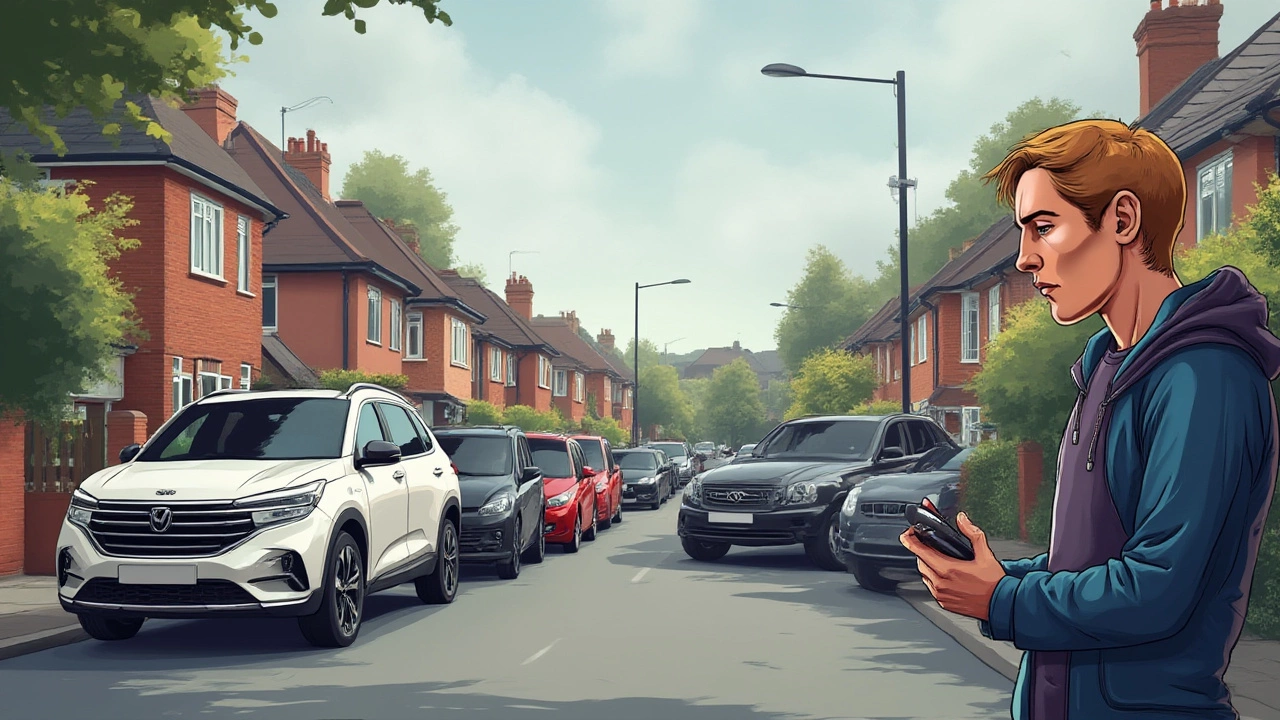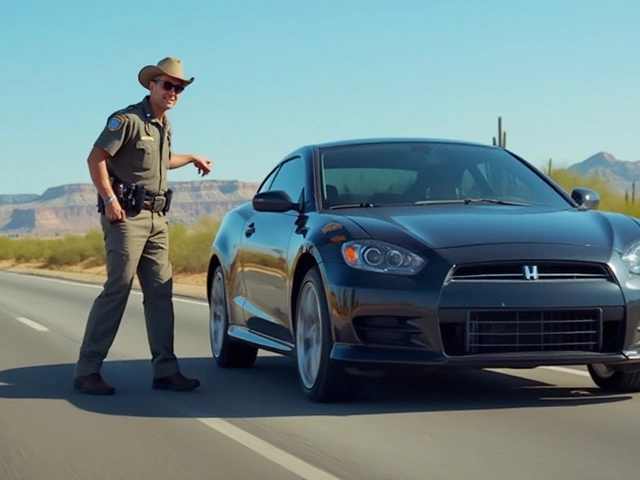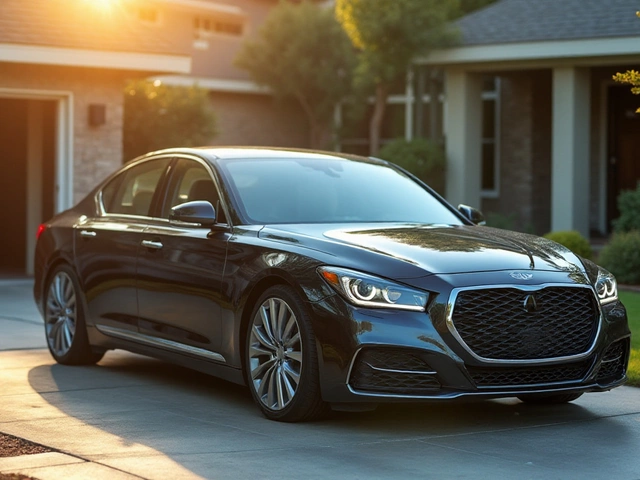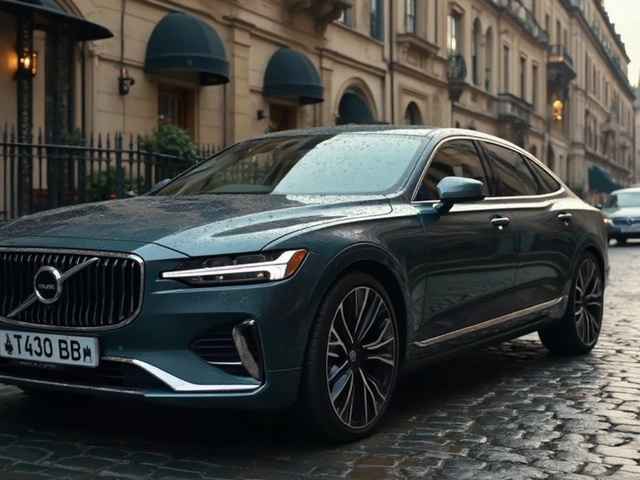Picture this: you're stuck at a red light on a July afternoon, sunlight pouring through the glass, cooking the top of your head. You regret not getting window tint every time you squint behind the wheel. But then, picking the right tint can feel like wandering a maze—there are percentages, types, brands, and something about the law you really shouldn't ignore. Why do some cars look sleek while others look more like fish tanks?
What's in a Tint? Exploring Types, Shades, and What They Actually Do
The word "tint" gets thrown around a lot, but there's more than one way to darken your ride. The most basic is dyed film, which is the cheapest option out there. It's dyed polyester layered right onto the glass. It helps with glare and, honestly, it does make your car look good for a while, but it fades over time—often faster than you'd like—and it doesn't block heat all that well. For those who want better performance, metalized film comes into play. These tints have layers of tiny metal particles. You get a reflective look, plus great heat rejection. But there's a trade-off: that metal can mess with your cell reception or GPS. I once had a friend with a sick-looking ride...but he couldn't play Spotify for his entire morning drive. Not worth it, in my book.
Ceramic tint sits at the top. It doesn't use dye or metal, just high-tech ceramics. This type blocks heat without messing up radio signals. It's tough, it's clear, and it does wonders for keeping your car cool. It also keeps out up to 99% of harmful UV rays—great if you have a fair-skinned kid like my Troy who turns lobster-red in the backseat. If you're rolling in a brand-new EV or a luxury car, ceramic tints are hands-down the top pick. Just be ready for the higher price tag.
If you wonder how dark to go, that's where percentages come in. A 35% tint means only 35% of visible light gets through. The smaller the number, the darker the tint. But here's the catch: most states (and countries, if you wander outside the US) have hard rules about how dark you can go. Typical limits? Somewhere between 35% and 50% on the front side windows, but some states let you go all the way down to 20% or even lower on the rears. You don’t want a ticket just because you wanted to keep your privacy or protect your seats from sun fade.
Check out this quick guide to tint types and what they block:
| Tint Type | Heat Blocking | UV Rejection | Color Stability | Cost |
|---|---|---|---|---|
| Dyed | Low | Moderate | Poor | $ |
| Metalized | High | High | Good | $$ |
| Ceramic | Very High | Excellent | Excellent | $$$ |
| Hybrid | Moderate | High | Good | $$ |
Hybrid tints try to combine the best of dyed and metalized, balancing cost with performance. These are often underrated—if you want just a little bit of everything, give them a look.
Tinting isn't all about looks or privacy. Think about your comfort on those road trips. Have you ever driven home from the beach with sunburn on your arm? A good tint literally saves your skin every time you're behind the wheel. High-end films also help keep your interior cooler, which means less AC and better fuel economy. Plus, it protects your upholstery and dashboard from cracking—something few people consider until they're vacuuming crumbs out of a split seat.

Legal, Safe, and Smart: How to Pick the Right Tint for Your Car and Lifestyle
Let’s face it, tint laws are confusing. Every state draws the line somewhere different, and if you've just moved or road trip across state lines, those rules can blindside you. Most scary? Law enforcement actually carries devices to check your tint’s light transmission (VLT). Get busted, and you’re looking at a fine, maybe even a fix-it ticket, which means scraping off your hard-earned shade. Your best move: check your state’s DMV website or swing by a reputable tint shop. They’ll know the regs so you don’t get nailed by surprise.
The benefits of the right tint go way beyond avoiding tickets. Ever parked outside in August? Interior temps can hit 130°F or more if you’re not careful. A premium ceramic tint can drop that temp by up to 20 degrees. Saves your hands from burning on the wheel—and stops your kid from whining about the buckle being "too hot," a regular occurrence in my car during summer camp drop-off. The best car tint isn’t just one with the right look, but the one that keeps your family comfortable without crossing legal lines.
Some states allow darker tint toward the rear of the car, reasoning that driver visibility is most important at the front. Side mirrors often substitute for rear window views, so SUVs and minivans get away with factory tints as dark as 15%. Keep in mind, manufacturers offer "privacy glass" on rear windows, but that isn't always the same as aftermarket film. You might still want a UV-blocking layer up front for safety and protection, even if it isn’t dark at all.
If night driving is your thing, don’t go too dark. It’s tempting to crave limo-tint, but your visibility takes a hit at night. Eyestrain and missed hazards aren’t worth it. I've had friends peel off dark tints within days because they couldn't spot a jogger or a deer until the very last moment. Play it safe—nobody wants to relive that kind of scare or, worse, the aftermath.
If you want high performance but minimal darkening, look for "clear" ceramic films. They block UV and infrared without darkening your view. These are popular for front windshields in hot states. Just make sure your chosen installer uses a name-brand film. 3M, Llumar, SunTek, and Huper Optik are kings of the business, and they back up their stuff with lifetime warranties. No-name films are a crapshoot—they might fade, bubble, or peel in just a year or two. You don't want that wavy horror-show on your glass, trust me.
Always think long-term cost, too. A cheap job could mean full removal and redo down the line. Good film applied by a pro is nearly invisible at the edges and lasts as long as the car. DIY kits exist, sure, but they’re tricky, and misaligned or bubbled film is the fastest way to snarl at your handiwork every morning. If you want flawless results, leave it to a pro shop.
Here’s a quick checklist to keep your tint job smart and legal:
- Check your state’s legal VLT percentages, especially on front side windows and windshield.
- Ask for UV protection numbers; you want at least 99% UV rejection if you’re serious about skin safety.
- Discuss your daily driving: long commutes, city vs. rural, lots of night driving? It matters.
- Stick with major brands for warranties and proven results.
- Think twice before going super-dark—it may be cool, but not practical.

The Real-World Verdict: Which Tint Is Right for You?
Here’s the deal: there isn’t one "right" answer. What works for your buddy’s Mustang won’t work for your family hauler. The best car tint is the one that fits your needs, your budget, and keeps you protected without inviting trouble. If you live in Texas or Arizona—or anywhere the sun bakes you daily—ceramic film is worth every penny. It keeps interiors cool, blocks UV, and doesn’t mess with technology. Parents swear by it for keeping kids safe from sunburn and crankiness every time you’re stuck in traffic on the way to soccer practice.
If you’re working with an older car, maybe something you don’t plan to keep ten years, a good dyed or hybrid film might be all you need. Still want sharp looks but don’t care for the cost? Metalized films split the difference, but do check your car’s antennas first. Annoying as it is, some vehicles really don’t like that metal layer, and suddenly your keyless entry or GPS gets glitchy.
I bet you didn’t know that the Skin Cancer Foundation actually recommends using window tint (the UV-blocking kind) as a step to reduce skin cancer risk. That’s a fact. Now, for families like mine, this piece of comfort and safety beats the cost every time. My Troy never complains when I pick him up, even when it’s blazing out. You’ll notice your AC works less, your dash and seats don’t crack, and you feel better knowing you’re just a little safer from that relentless sun.
Shopping for tint? Don’t just visit the first spot you Google. Look for real reviews. Walk into the shop and ask to see sample films on their own clear glass. If they’re hush-hush about what brands they install or don’t give a warranty, take that as a sign to walk. A reputable shop will have sample boards showing different shades, UV-block percentages, and warranty details out in the open. They’ll explain the law, not just slap on the darkest film you ask for.
If you’re doing mostly short drives or live in the rainy Northwest, you might be fine with something affordable and basic. But if you hate sweating through your shirt each day, count the extra upfront cost as an investment. Lifetime tints save you over years of driving.
Sometimes the simple answer is best: go mid-range (30-40%) on the front, darker in the back if it’s legal, clear ceramic up front for real sunbelt warriors. That combo covers comfort, style, and law. Talk to your installer about your daily life—not just your car’s make and model—and you’ll walk away happy. Tinted windows aren’t just a superficial mod. They’re about comfort, health, and pride. Choose wisely, and your car will thank you every mile.




